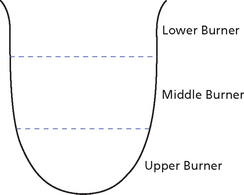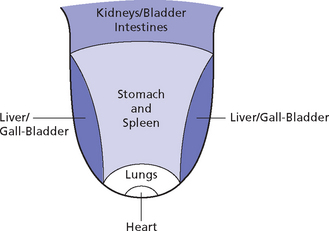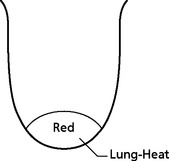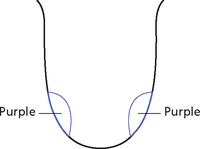 TONGUE DIAGNOSIS
TONGUE DIAGNOSIS
CONDITIONS FOR EXAMINING THE TONGUE
External factors affecting the colour of the tongue
Medicines
Some medicines affect the appearance of the tongue and the most common ones are antibiotics. These tend to make the tongue partially peeled, that is, the loss of small patches of coating. Therefore, when I see such a tongue, the first thing I ask is whether the patient is on antibiotics or has taken them recently (Fig. 23.1). In my experience, the effect of the antibiotics on the tongue lasts for about 2 weeks after stopping the course. Judging from the effects of antibiotics on the tongue, we can deduce that they injure Stomach-Yin.
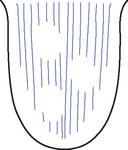
Fig. 23.1 Partially peeled tongue from antibiotics
Anti-inflammatory drugs such as phenylbutazone paradoxically cause the tongue to develop red points.
AREAS OF THE TONGUE
In men and women alike, the tongue-body can be divided into three areas: the rear corresponding to the Lower Burner, the middle to the Middle Burner and the front to the Upper Burner (Fig. 23.2).
Therefore, according to this division, the front third of the tongue reflects the state of the Heart and Lungs, the middle third that of the Stomach, Spleen, Liver and Gall-Bladder and the rear third that of the Kidneys, Bladder and Intestines. Figure 23.3 illustrates the areas corresponding to the Internal Organs in detail.
The relative position of the Heart and Lung areas on the tongue should be explained in relation to redness, swelling, cracks or Purple colour.
When there is Lung-Heat, this will make the whole front of the tongue Red including the Heart area (even though the Heat is only in the Lungs and not in the Heart) (Fig. 23.4); when there is Heart-Heat only the tip of the tongue becomes Red (Fig. 23.5).

Fig. 23.5 Tongue indicating Heart-Heat (Red tip)
As far as swelling is concerned, a swelling of the tip itself indicates a Heart pathology, usually Heart-Heat. (Fig. 23.6). A Lung-related swelling usually appears either in the whole front third (Fig. 23.7) or on the sides between the Heart area and the Stomach and Spleen area (Fig. 23.8).
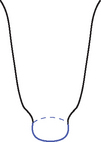
Fig. 23.6 Swelling in Heart area
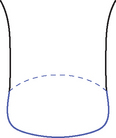
Fig. 23.7 Swelling in Lung area (front third)
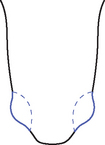
Fig. 23.8 Swelling in Lung area (sides)
As far as cracks are concerned, Lung cracks are usually located in the area between the tip and the centre (Fig. 23.9).

Fig. 23.9 Lung cracks
A Purple colour on the sides of the tongue between the tip and centre may be related to the Lungs or Heart. It indicates Blood stasis and, in lung disease, it is seen in chronic asthma or emphysema, while in heart disease it is seen in coronary heart disease or angina. The Purple patch may be unilateral or bilateral (Fig. 23.10). In women, in addition, a Purple colour in that area may also indicate a breast pathology.
Although the sides of the tongue correspond to Liver and Gall-Bladder, they may also, under certain circumstances, reflect conditions of the Spleen. A pathology of the Liver, such as Heat, is reflected along the whole side of the tongue, while one of the Spleen is also reflected on the sides but only in the central section. This applies to both redness and swelling, and Figures 23.11 and 23.12 illustrate this difference.
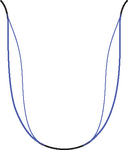
Fig. 23.11 The sides in Liver pathology
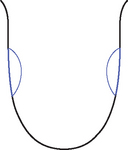
Fig. 23.12 The sides in Spleen pathology
CLINICAL SIGNIFICANCE OF THE TONGUE
The clinical significance of the tongue must be related to its various aspects as follows.
Tongue coating
The tongue coating is formed when some of the fluids generated in the process of the Stomach’s digestion of food flow up and create its coating. A thin, white tongue coating, therefore, indicates a good state of Stomach-Qi while a rootless or an absent tongue coating indicates weakening of Stomach-Qi.
The tongue coating should be thin enough for the tongue-body colour to be seen through it.

